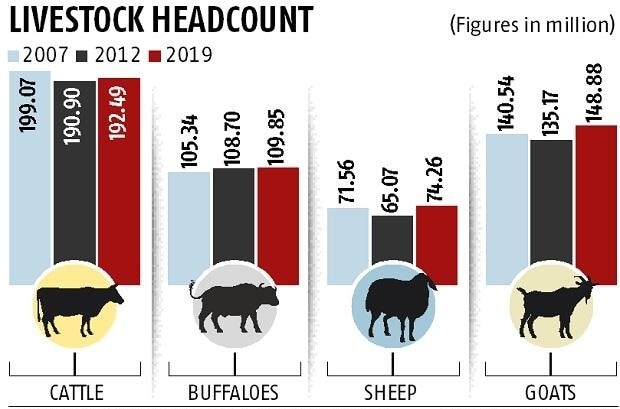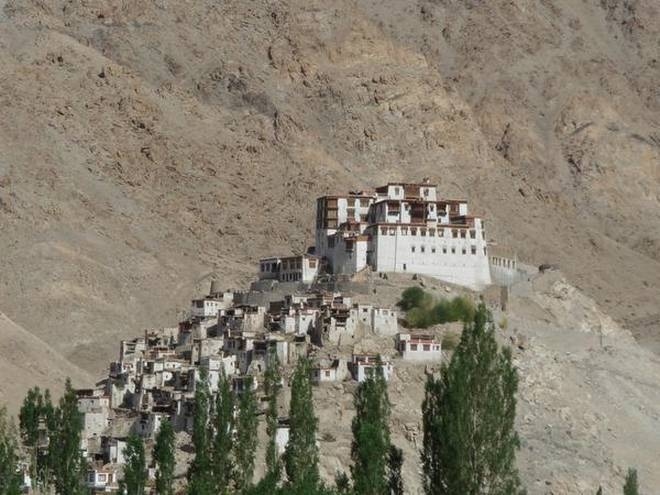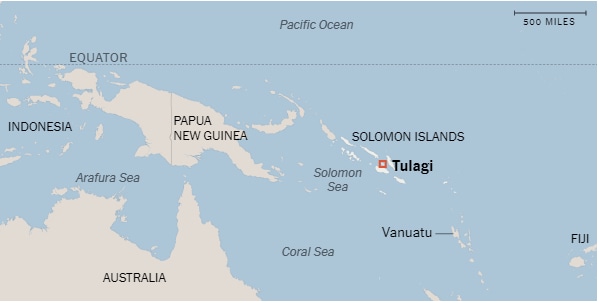Social Justice
World’s Children Report 2019
The United Nations Children's Fund (UNICEF) has released its ‘State of the World’s Children’ report for 2019.
- The report is the UNICEF’s most comprehensive report on children, food and nutrition in 20 years.
- The Global Hunger Index report was recently released by the organisation Welthungerhilfe.
Key Findings
- Malnutrition:
- At least 1 in 3 children under 5 is undernourished or overweight.
- At least 1 in 2 children suffer from hidden hunger.
- Implications:
- The triple burden of malnutrition – undernutrition, hidden hunger and overweight – threatens the survival, growth and development of children, young people, economies and nations.
- For example, Iron deficiency (a form of hidden hunger) reduces children’s ability to learn and increases women’s risk of death during or shortly after childbirth.
- Causes:
- The triple burden of malnutrition is driven by the poor quality of children’s diets: 2 in 3 children are not fed the minimum recommended diverse diet for healthy growth and development.
- Globalization, urbanization, inequities, humanitarian crises and climate shocks are driving unprecedented negative changes in the nutrition situation of children around the world.
- Suggestions:
- Food environments are crucial.
- There is a need to empower families, children and young people to demand nutritious food.
- Similarly, there is a need to drive food suppliers to do the right thing for children.
- Supportive systems – health, water and sanitation, education and social protection– should be mobilized to scale up nutrition results for all children.
- There is a need to collect, analyse and use good-quality data and evidence regularly to guide action and track progress.
- Food environments are crucial.
India-Specific Findings
- Malnutrition:
- 35% of Indian children suffer from stunting, 17% suffer from wasting, 33% are underweight and 2% are overweight.
- Indian children are being diagnosed with adult diseases such as hypertension, chronic kidney disease and diabetes.
- Every second woman in the country is anaemic, as are 40.5% children.
- In comparison with other countries:
- Among countries in South Asia, India fares the worst (54%) on the prevalence of children under five who are either stunted, wasted or overweight.
- Afghanistan and Bangladesh follow at 49% and 46%, respectively. Sri Lanka and the Maldives are the better performing countries in the region, at 28% and 32%, respectively.
- India also has the highest burden of deaths among children under five per year, with over 8 lakh deaths in 2018.
- It is followed by Nigeria, Pakistan and the Democratic Republic of Congo, at 8.6 lakh, 4.09 lakh and 2.96 lakh deaths per year, respectively.
- Among countries in South Asia, India fares the worst (54%) on the prevalence of children under five who are either stunted, wasted or overweight.
- Causes:
- India is moving away from seasonal food as well as traditional food whereas the consumption of processed food has increased.
- Urban India is moving into an unhealthy food snacking environment, which is influencing children's food choices and the same is also spreading to rural areas.
- Food consumption patterns in India reveal that child diets are largely lack proteins and micronutrients and are influenced by household (adult) food choices.
- Over the decades, despite growing incomes, protein-based calories remain low and unchanged, and the calorific share of fruits and vegetables has declined.
- Steps Appreciated:
- POSHAN Abhiyaan or the National Nutrition Mission is playing a major role in improving nutrition indicators across India.
- The Anaemia Mukt Bharat programme to fight anaemic prevalence has been recognized as one of the best programmes implemented by governments across the world to address malnutrition.
- The 6X6X6 strategy (six target beneficiary groups, six interventions and six institutional mechanisms) of the programme has been highlighted for using anaemia testing and treatment as the entry point to provide information on healthy diets.
Agriculture
20th Livestock Census
Ministry of Fisheries, Animal Husbandry and Dairying has released the 20th Livestock Census report recently.
- The release provides key results reflecting the aggregate counts of various species as well as its comparison with the previous census.
Key Points
- The total Livestock population is 535.78 million in the country showing an increase of 4.6% over Livestock Census-2012.
- West Bengal observed the highest increase of 23%, followed by Telangana (22%).
- The total number of cattle in the country has shown an increase of 0.8 %.
- The increase is mainly driven by a sharp increase in cross-bred cattle and higher female indigenous cattle population.
- Uttar Pradesh has observed a maximum decrease in cattle population though the state has taken several steps to save cattle.
- West Bengal has seen the highest rise of 15% in cattle population.
- The population of the total exotic/crossbred cattle has increased by 27%.
- Cross-bred animals contributed around 28% to India’s total milk production in 2018-19.
- The milch population of exotic and crossbred cattle such as Jersey or Holsteins shows higher milk yields and thus farmers prefer animals yielding more milk.
- A decline of 6% in the total indigenous cattle population has been observed.
- India’s indigenous cattle numbers continue to decline, notwithstanding the government’s efforts to promote conservation of desi breeds through the Rashtriya Gokul Mission (RGM).
- The sharpest fall has been observed in the states (Uttar Pradesh, Madhya Pradesh, Rajasthan,Maharashtra, etc.) with tough cow slaughter laws.
- The total milch animals have shown an increase of 6%.
- Due to higher yields, foreign breeds constitute more than half the population of milch animals.
- The more the number of animals that produce milk, the more would be pressure on land and fiercer would be competition between man and animals for survival.
- The figures show that nearly 75% of total cattle in the country are female (cows)-- a clear sign of dairy farmers' preferences for milk-producing cattle. This also gained momentum in the past couple of years due to the government's assistance in terms of providing sex-sorted artificial insemination (AI), with semen of high-yielding bulls, free of cost at farmers' doorstep.
- The backyard poultry has increased by around 46%.
- The sharp increase in backyard poultry is a significant change in the rural landscape which shows a sign of poverty alleviation.
- Total Bovine population (Cattle, Buffalo, Mithun and Yak) has shown an increase of about 1%.
- The population of sheep, goat and Mithun grew in double digits while the count of horses and ponies, pigs, camels, donkeys, mules and yaks declined.
The Livestock Census
- The Livestock Census has been conducted in the country periodically since 1919-20. Since then it has been conducted once every 5 years.
- It covers all domesticated animals and their headcounts.
- So far 19 such censuses have been conducted by the Ministry of Fisheries, Animal Husbandry and Dairying, in participation with State Governments and UT Administrations.
- The household-level data through online transmission from the field has been used for the first time in 20th Livestock Census.
- The census is beneficial not just for policymakers but also for agriculturists, traders, entrepreneurs, dairying industry and masses in general.
Important Facts For Prelims
Food Safety Mitra Scheme
Recently, the Union Minister of Health and Family Welfare launched the Food Safety Mitra (FSM) scheme to mark the occasion of World Food Day.
- The theme for the day was ‘Healthy Diets for a Zero Hunger World’.
- ‘Eat Right Jacket’ and ‘Eat Right Jhola’ initiatives were also launched to strengthen the food safety administration and to scale up the Eat Right India movement.
- The Food Safety Mitra scheme aims to support small and medium-scale food businesses so as to comply with the food safety laws and will facilitate them with the licensing and registration process, hygiene ratings and training programme.
- The FSMs would undergo training and certification that will be conducted by the Food Safety and Standards Authority of India (FSSAI), in order to get paid by food businesses for their services.
- The scheme would also create new employment opportunities for youth (particularly with food and nutrition background).
- The Eat Right Jacket is a jacket that has a smart design to hold technological devices like tablets/smartphones, a QR code and a Radio-frequency identification (RFID) tag for identification and tracking, which will be used by the field staff.
- The use of technology would bring in the efficiency, professionalism, and transparency in food safety administration.
- The Eat Right Jhola is a reusable cloth bag that is expected to replace plastic bags for shopping purpose in various retail chains.
- FSSAI has partnered with the Domestic Workers Sector Skill Council under the Ministry of Skill Development and Entrepreneurship to launch the training course.
Important Facts For Prelims
Rangdum Monastery
The Archaeological Survey of India is planning to declare the Rangdum Monastery located in Ladakh (Kargil district) as a monument of national importance.
- The move aims to look into the opportunities for expansion of tourism in the Ladakh region in the backdrop of the decision to split Jammu and Kashmir into two Union Territories.
Rangdum Monastery
- It is the 18th century built monastery that is situated at an altitude of 4,031 m. at the head of the Suru Valley, in Ladakh.
- Suru Valley is drained by the Suru River which is a tributary of the Indus River.
- Rangdum Monastery is a Tibetan Buddhist monastery belonging to the Gelugpa sect.
Archaeological Survey of India (ASI)
- ASI is the premier organization for the archaeological research, scientific analysis, excavation of archaeological sites, conservation and preservation of protected monuments.
- It is an attached office under the Department of Culture, Ministry of Culture.
- ASI was founded in 1861 by Alexander Cunningham- the first Director-General of ASI.
Important Facts For Prelims
Van Dhan Internship Programme
“Van Dhan Internship Programme” organised by TRIFED under Ministry of Tribal Affairs has recently been launched by the government.
- 18 interns (to be called Minister’s interns) from some of the reputed institutes of rural management, social work and Social Services of the country are participating in the “Van Dhan Internship Programme”.
- These interns have been selected to enhance the output of Van Dhan programme to make the tribal population self-reliant.
- They will support the Tribal Cooperative Marketing Development Federation of India (TRIFED) activities on livelihood promotion, marketing and credit linkages, etc.
- They will develop tools and techniques on institutional development including a mechanism for determination of a just price or producer price of Minor Forest Products.
Van Dhan Yojana
- Van Dhan Yojana was launched in 2018, in Chhattisgarh. A Van Dhan Vikas Kendra was set up under the program.
- The Van Dhan Vikas Kendra will cater to ten Self Help Groups of thirty tribal gatherers each.
- The selection of the tribal beneficiaries and formation of the SHGs has been undertaken by TRIFED.
- The Van Dhan Vikas Kendras will boost the economic development of tribals involved in the collection of Minor Forest Produce (MFP) and provide a sustainable MFP-based livelihood in MFP-rich districts.
Important Facts For Prelims
Tulagi Island
A Beijing-based company which has close ties to the Chinese Communist Party has secured exclusive development rights for the entire island of Tulagi and its surroundings.
- It has been reported that a secretive deal was signed in the month of September 2019 with the provincial government in the Solomon Islands, for the same.
- Tulagi is an island within the Solomon Islands, which are located in the South Pacific, directly between Australia and the U.S.
- It was the administrative seat (from 1893) of the British Solomon Islands Protectorate until it was destroyed by the Japanese (1942) during World War II.
- The move has alarmed U.S. officials who see the island chains of the South Pacific as crucial to keep China in check and protect important sea routes.
- The agreement includes provisions for a fishery base, an operations centre, and the building or enhancement of the airport.
- China is also pushing to end the region’s status as a diplomatic stronghold for Taiwan.
- The Solomons cut ties to Taiwan and allied with Beijing just a few days before the Tulagi deal. A second Pacific nation, Kiribati, followed suit the same week.






